







These works are composed of an image printed on canvas over which a layer of acrylic was applied to half the surface.








These works are composed of an image printed on canvas over which a layer of acrylic was applied to half the surface.



This work is based on an existing 1933 painting by M. Rakowski. A Polish painter who lived in Brussels. After a trip to his homeland, he made a series of paintings as souvenirs. I’ve bought the original painting (oil on panel) at a flea market in Couvin. For me, this work is a souvenir of the 10 years I’ve lived in Wallonia. The pasty painting was molded and a replica of it cast in bronze that I’ve patinated until the image became visible again.












Souvenir / jumeaux
These sculptures consist of a bronze replica of a branch in spring, the flower/leaf buds visible. The casting channels have been preserved, these form an interpretation of the branch due to the nature of the subject, mirroring it. The branch was patinated and the channels kept untreated bronze.
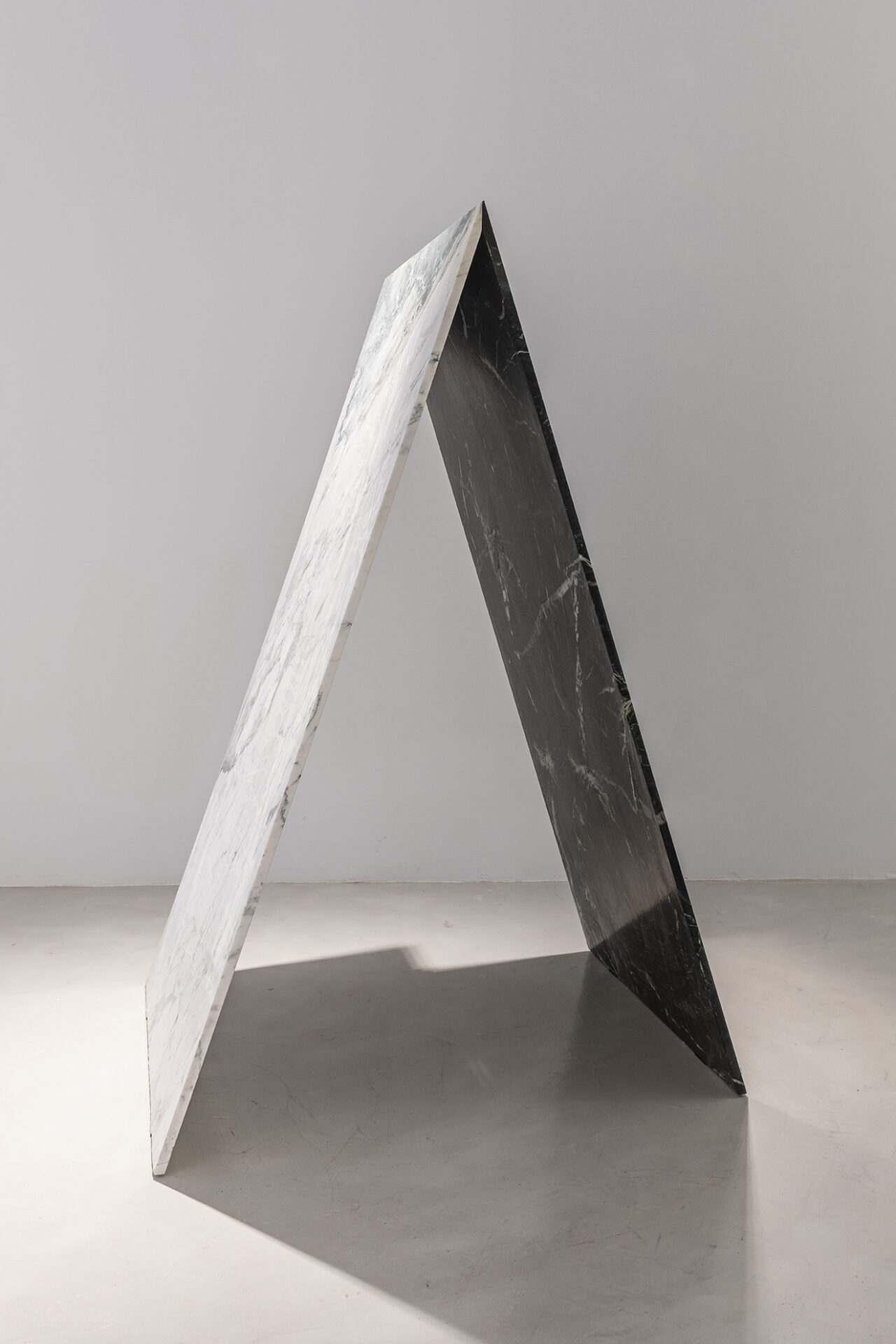













These works are composed of two marble slabs leaning against each other. Both slabs have a different size so there is no symmetrical angle but one of the two slabs is more slanted than the other. The top of the work forms a horizon at my eye level. I see these works as sublimated landscapes, two tectonic plates seem to propel each other higher in an equilibrium that could be rocked at any moment. The works were first shown in Mexico (Mexican marbles) where they defied two severe earthquakes, a fourth version I showed during the exhibition Avalancha, an Italian and a Spanish marble kept each other in balance there.




These works are composed of a number of ceramic plates arranged at an angle against the wall. Each tile has a different size. At the top, they form one straight line, a horizon at my eye level of 158cm. To achieve this, the tiles lean against the wall at different angles. The tiles where made in Mexico with different type of clay (Oaxaca, Metepec)








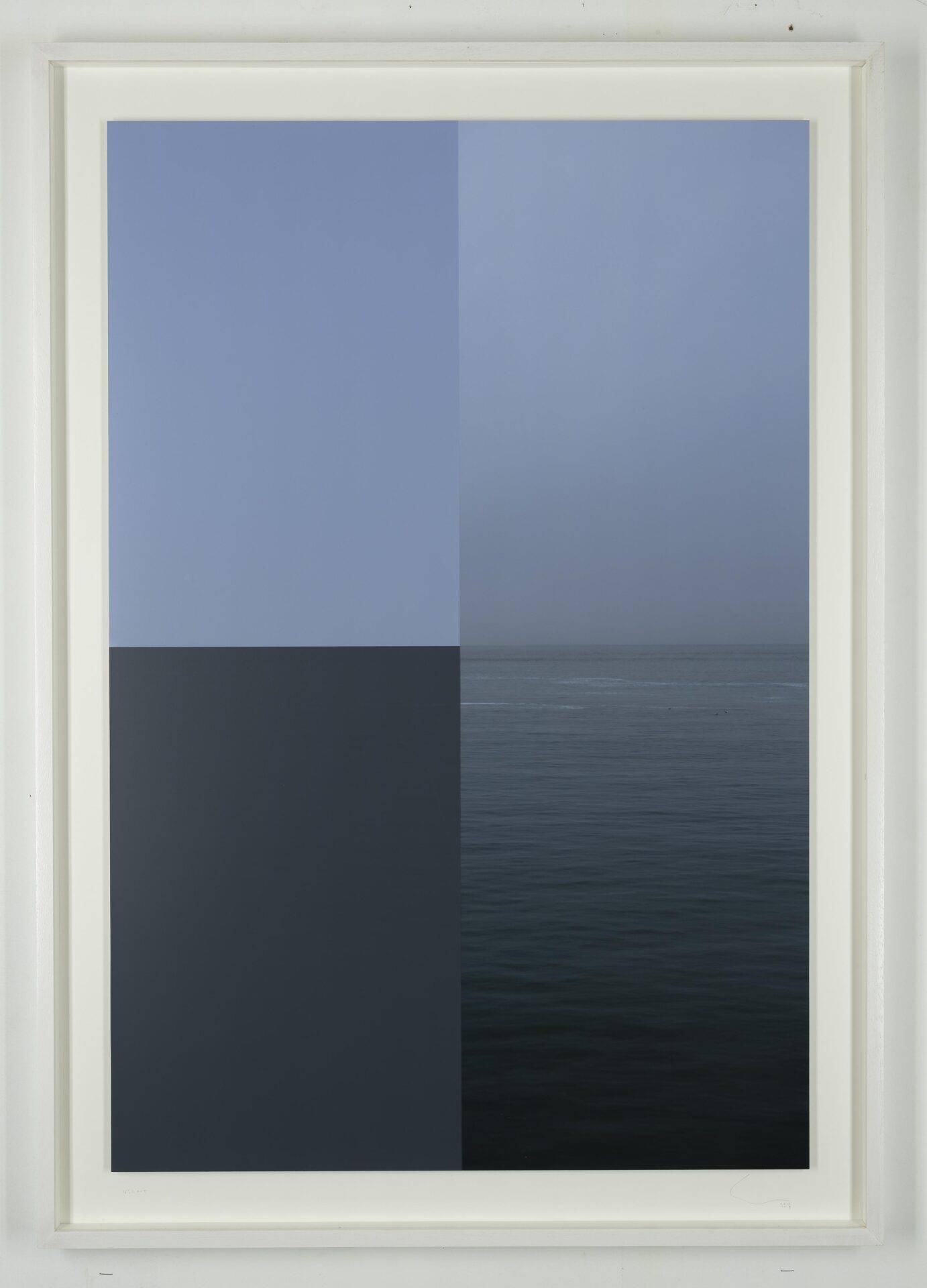









In the “Variations sur les mêmes thèmes” works, Cole uses a limited number of ingredients to create series in which each work is slightly different from the others. On top of a vertical photograph of the sea with the horizon perfectly in the middle, two areas of colour are screen-printed that together make up half of the image. The colours used are the average colours of the sky and the sea. By arranging the surfaces in four different ways, four different compositions are created. The screen-printed areas are printed matt on top of the glossy image.


















The monochrome works always play with the reflection of light. By applying several layers of varnish or by using a spotlight to light up a part of the surface, rudimentary landscapes become visible, a horizon emerges and the surface evolves depending on the viewer’s angle of view.
















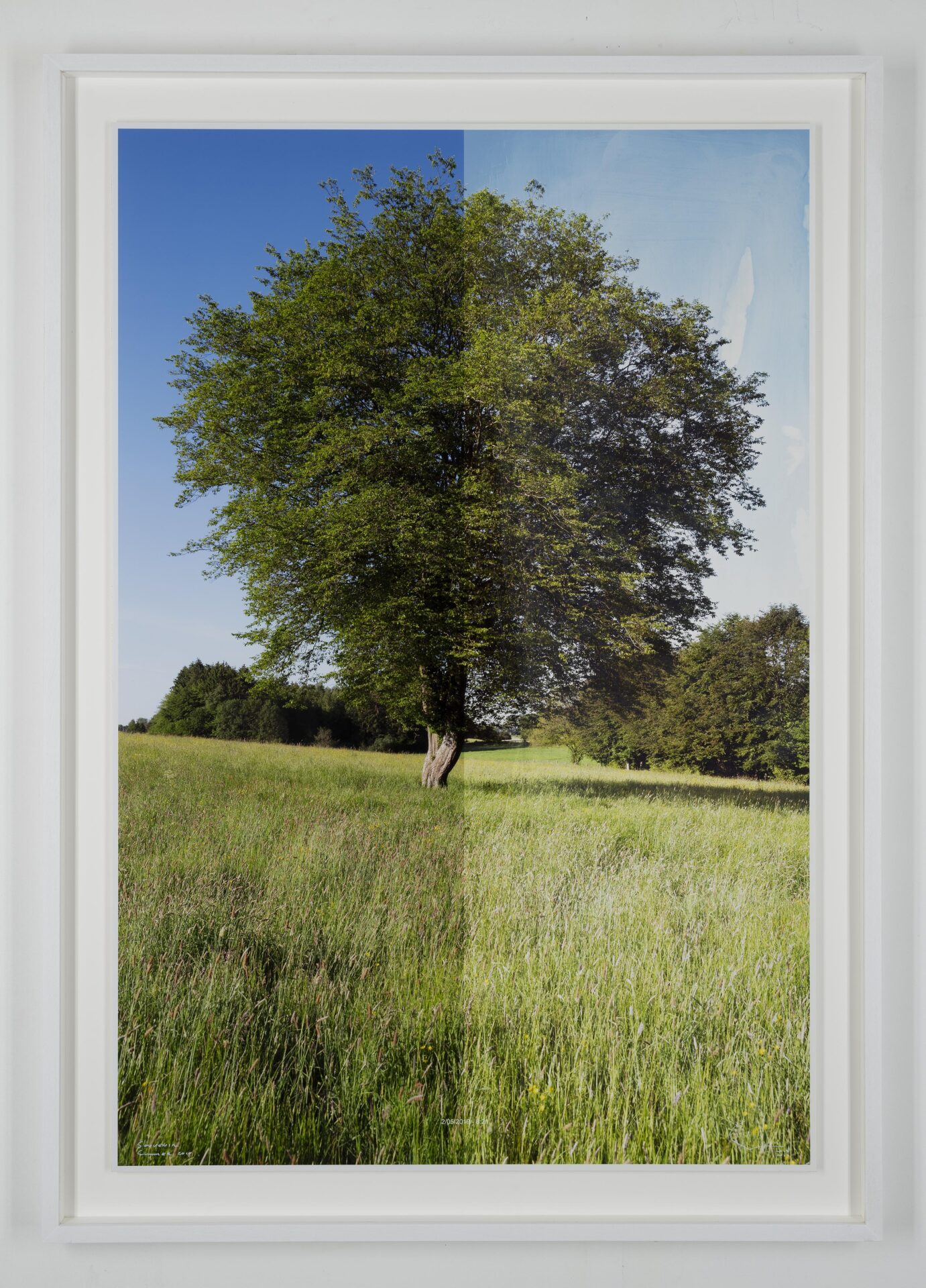

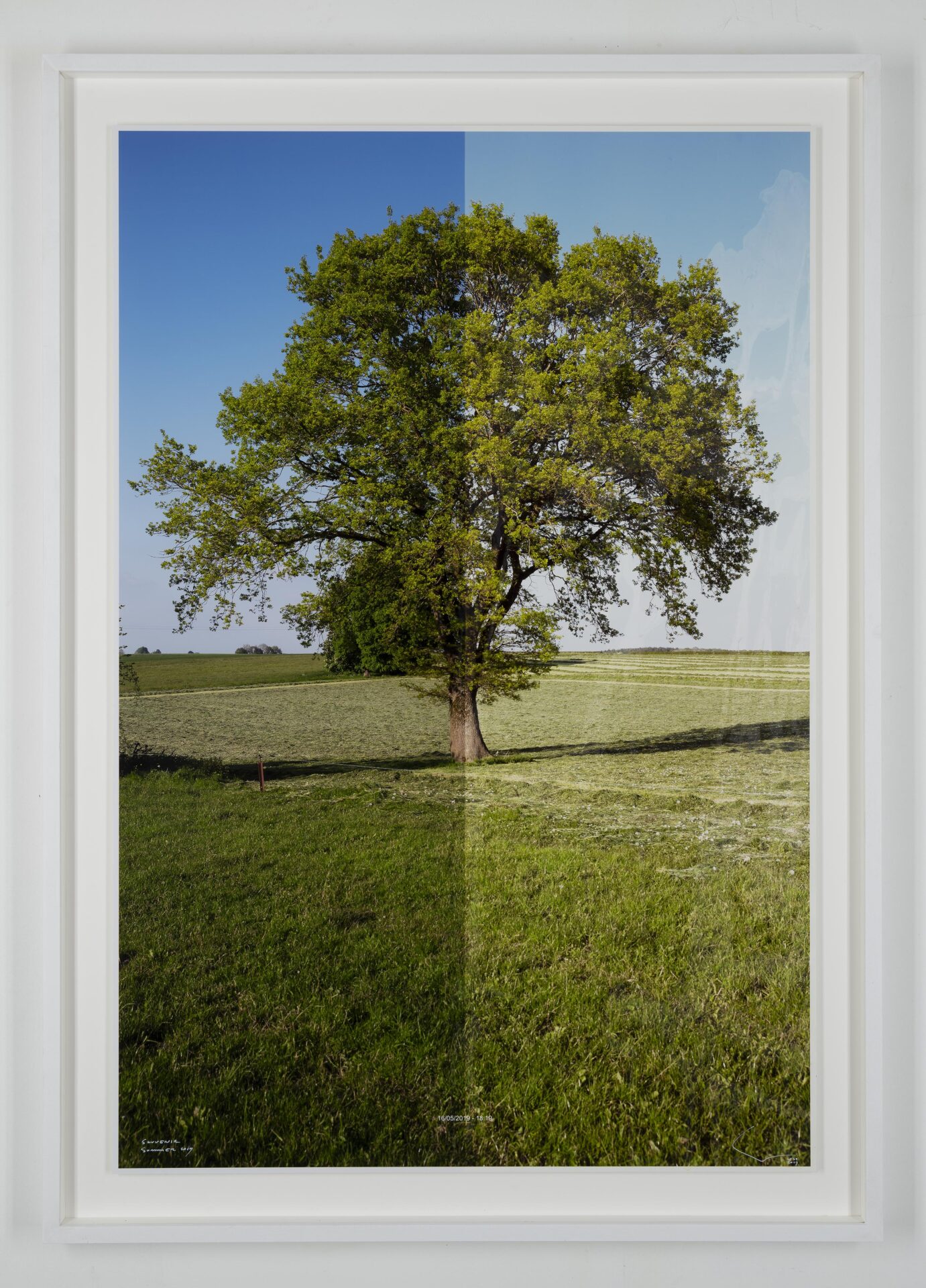

The “Souvenir” works were created when Cole decided to move back to Flanders from the Walloon town of Chimay. As a souvenir of the landscape, he photographed solitary trees during the spring. These images were developed on Lambda paper and exposed to the sun throughout the summer. The left half was covered so that only the right half was damaged by the sunlight. The summer of 2019 also turned out to be the warmest ever.














De tekeningen van Stijn Cole lijken machinaal gemaakt, Cole leerde zichzelf een techniek aan waarbij hij via arceringen eenzelfde intensiteit kan aanhouden gedurende lange periodes. De 1:1 tekeningen verwijzen naar de schaal van het onderwerp. Cole plaatste een kader in het landschap en fotografeerde vanop een bepaalde afstand het landschap door dit kader. De positie van zijn camera wordt door een keramische schijf op de grond aangetoond. Vanop deze plek ziet de toeschouwer het werk op ware grootte alsof het een venster op de realiteit zou zijn. Cole begon tekeningen te maken toen hij het verschuiven van het perspectief afhankelijk van de positie van waarnaar men een onderwerp bekijkt, als onderwerp van zijn werk wou maken. Met fotografische beelden kon hij een toeschouwer er niet toe bewegen dichterbij te komen, met zijn tekeningen slaagt hij hier wel in, mensen willen van dichtbij de details bestuderen en performen zo de fysieke verplaatsing die Cole voor ogen had.




















Timescapes” are photographic works that depict the evolution of a landscape’s colours over a period of time. Cole photographs the same landscape every minute for a certain period of time, a few hours, a day. All the colours of the sky are then converted into one average colour, and the same happens with those of the land surface, a lawn or the sea. These colours are digitally assembled until a timeline is created. Cole uses this process to tell different stories. In 60 tours d’éré, he photographed the sunset between 19:00 and 24:00 6o times during the summer of 2016. Throughout the series, in addition to the fact that no day is the same although the subject is, we see darkness falling earlier and earlier.
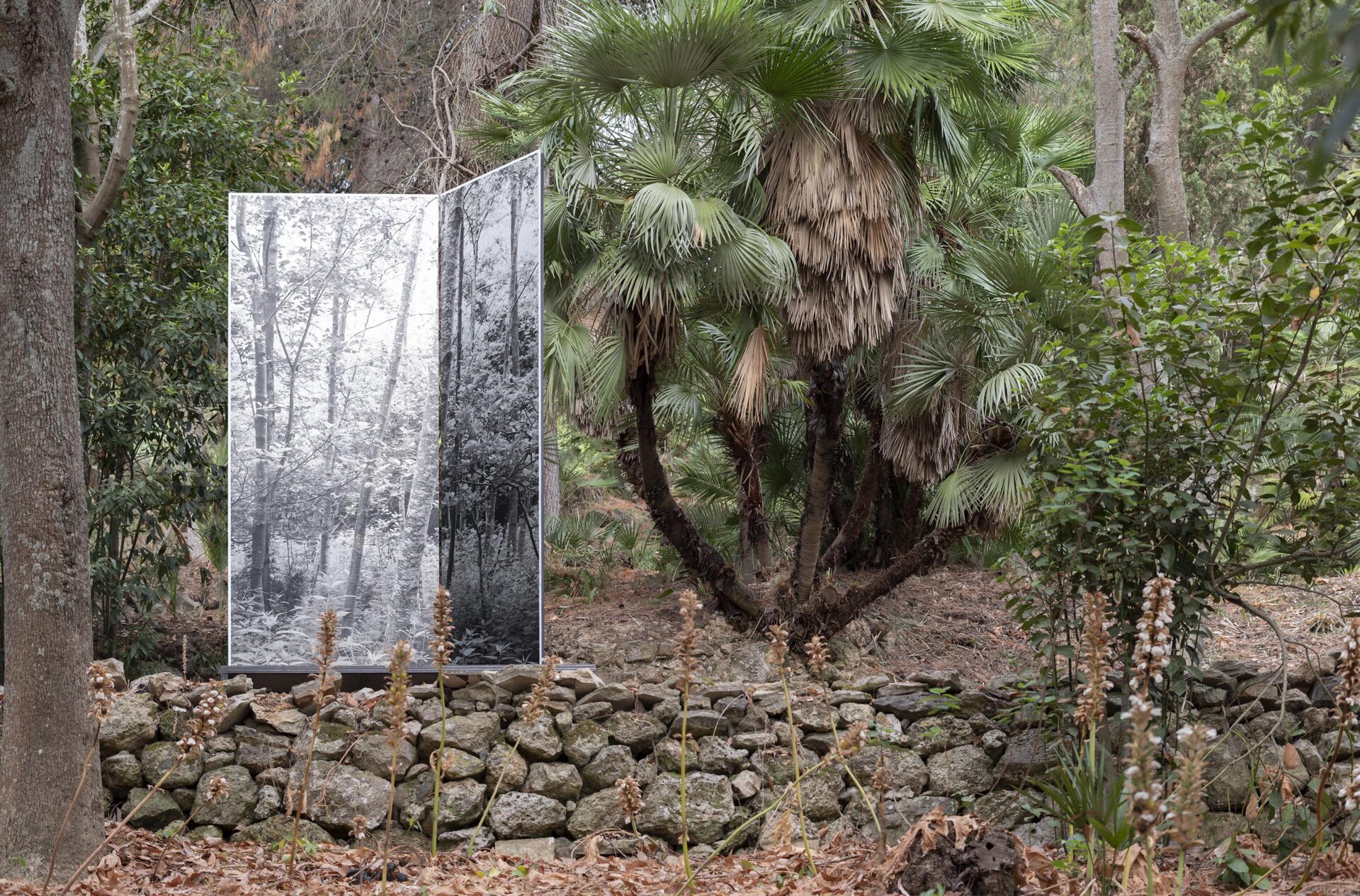













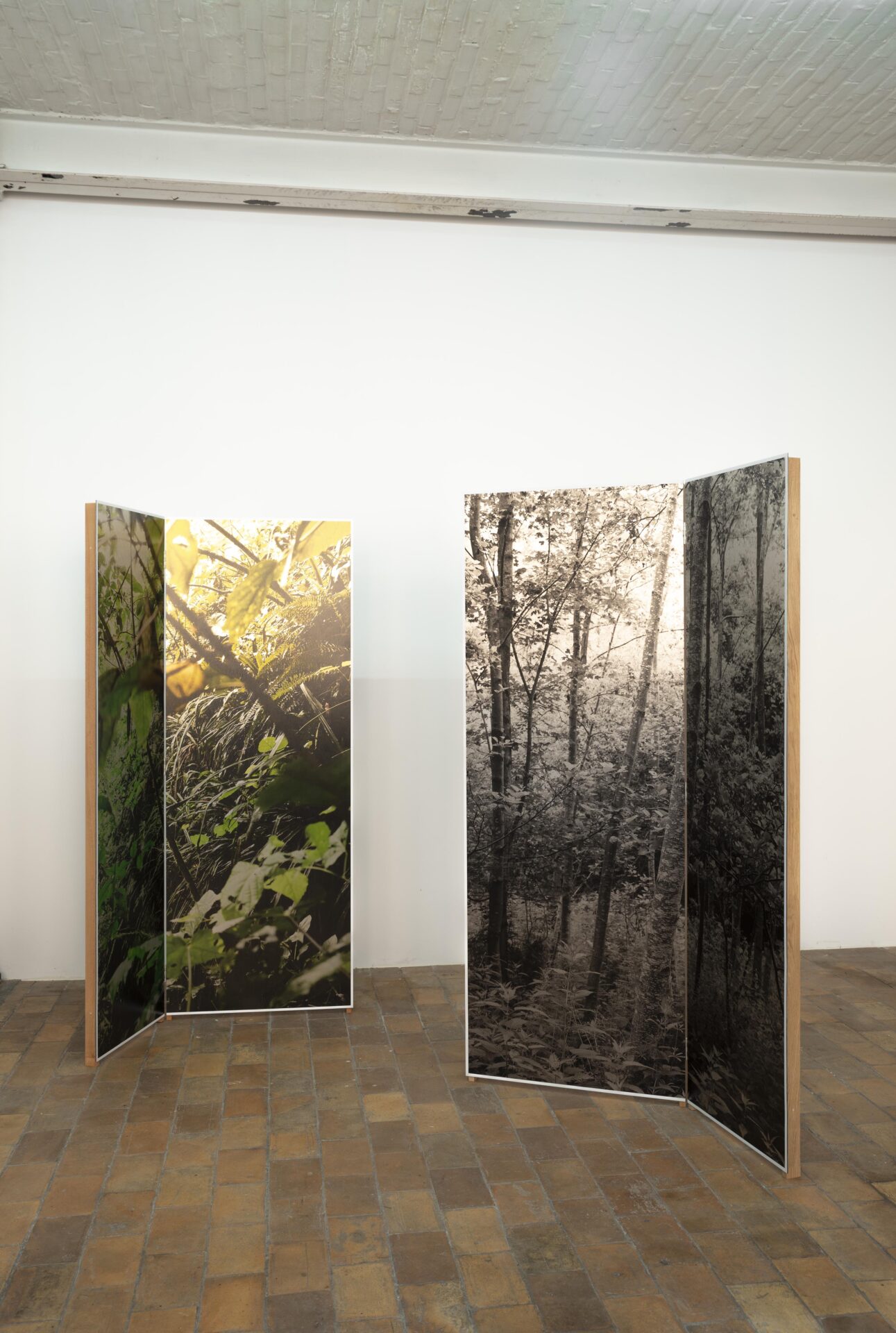

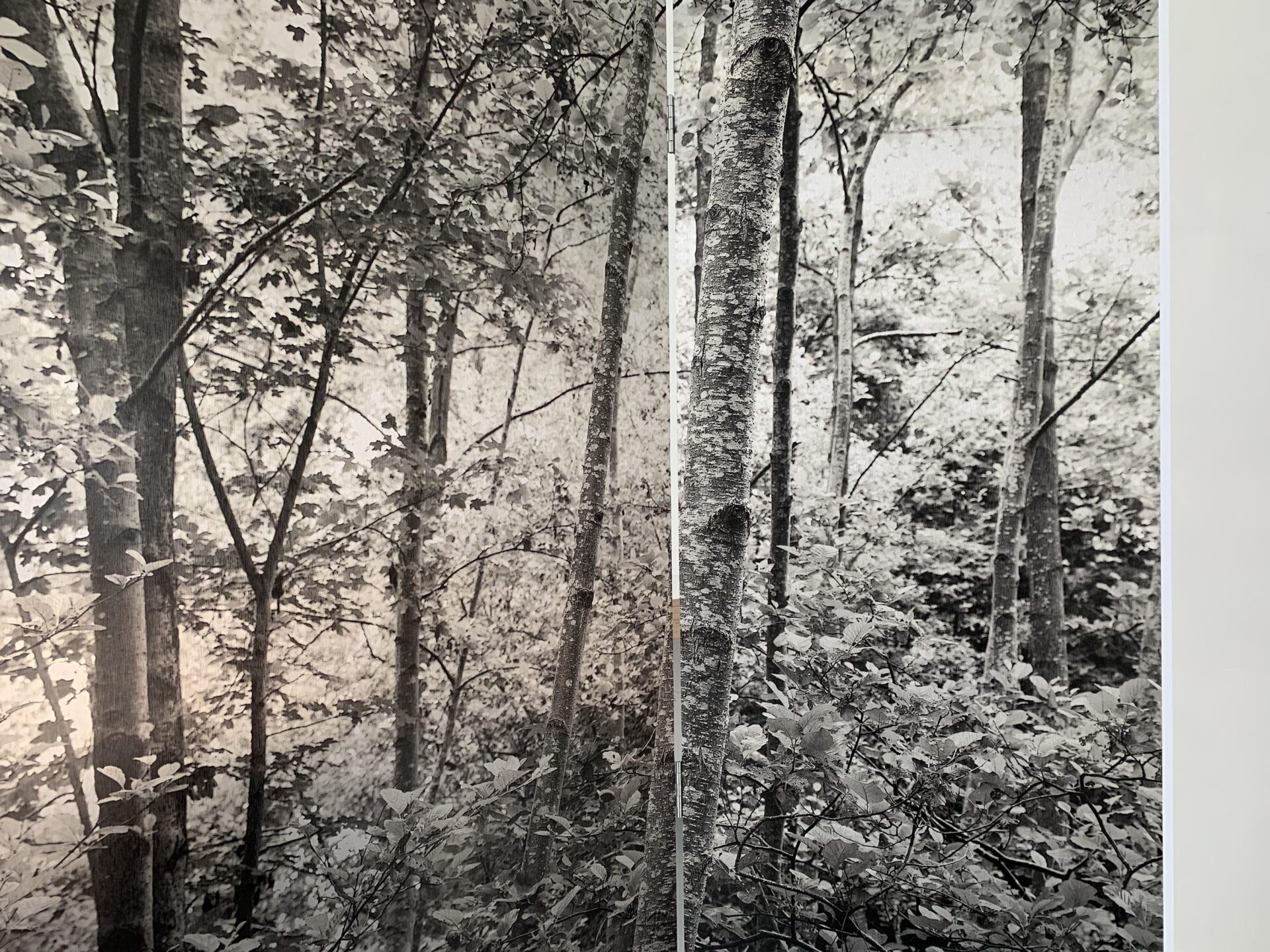





In these works, a three-dimensional component is added to a two-dimensional photograph. The image always consists of a disordered landscape, an image of the middle of a forest, the jungle. The work is printed in two parts on brushed aluminium, both parts are attached to each other by hinges that allow the angle to be determined. The gesture ensures that they can stand autonomously in the space and form a paravane. Cole presented this type of work for the first time at the Enghien Biennale in a formal French garden. A second was placed in an Italian botanical garden; this work showed mainly pioneering plants such as nettles and birches.






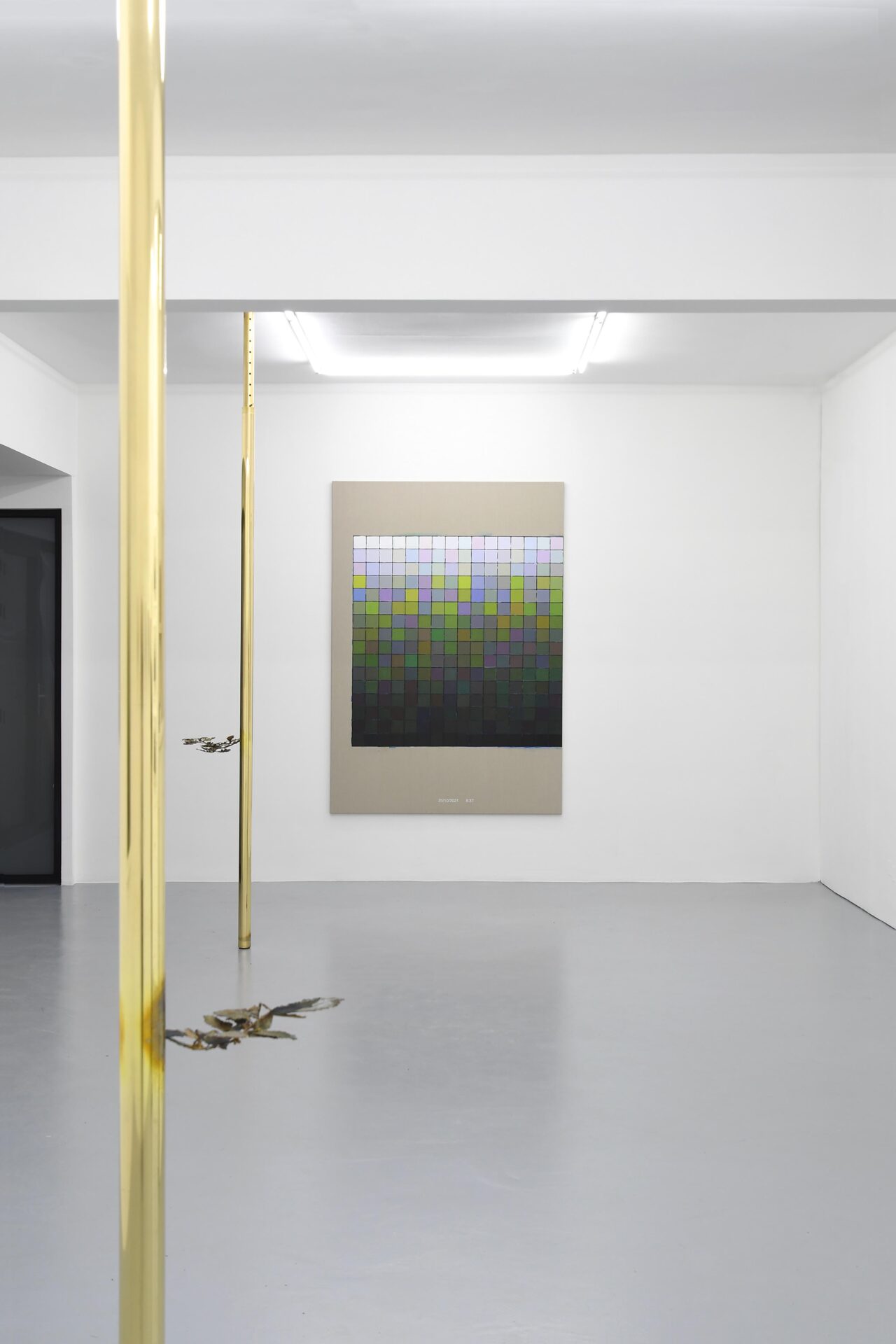







These works consist of exact bronze replicas of tree branches that may or may not be attached to a brass construction strut. These works are stretched between the ceiling and the floor. As in many of his other works, Cole adds a geometric gesture to a natural element. The works become part of the architecture; he showed them for the first time at his solo exhibition “Souvenirs” at the Brussels gallery Irène Laub.










In these A3-size works, a photographic image is split up into the image (in black and white) and the colours.
The colours present in the snapshot are listed from light to dark within a grid of 16×16 squares. Because the light colours end up at the top of this mathematical, computer-controlled list, many of these works create the illusion of a horizon and an abstracted landscape. The colours are reproduced on top of the print in oil paint.
The first series of six works came about when cole, prompted by the question: Who are you? travelled to the Mont Ventoux and from the summit took several photographs of the surrounding landscape.
















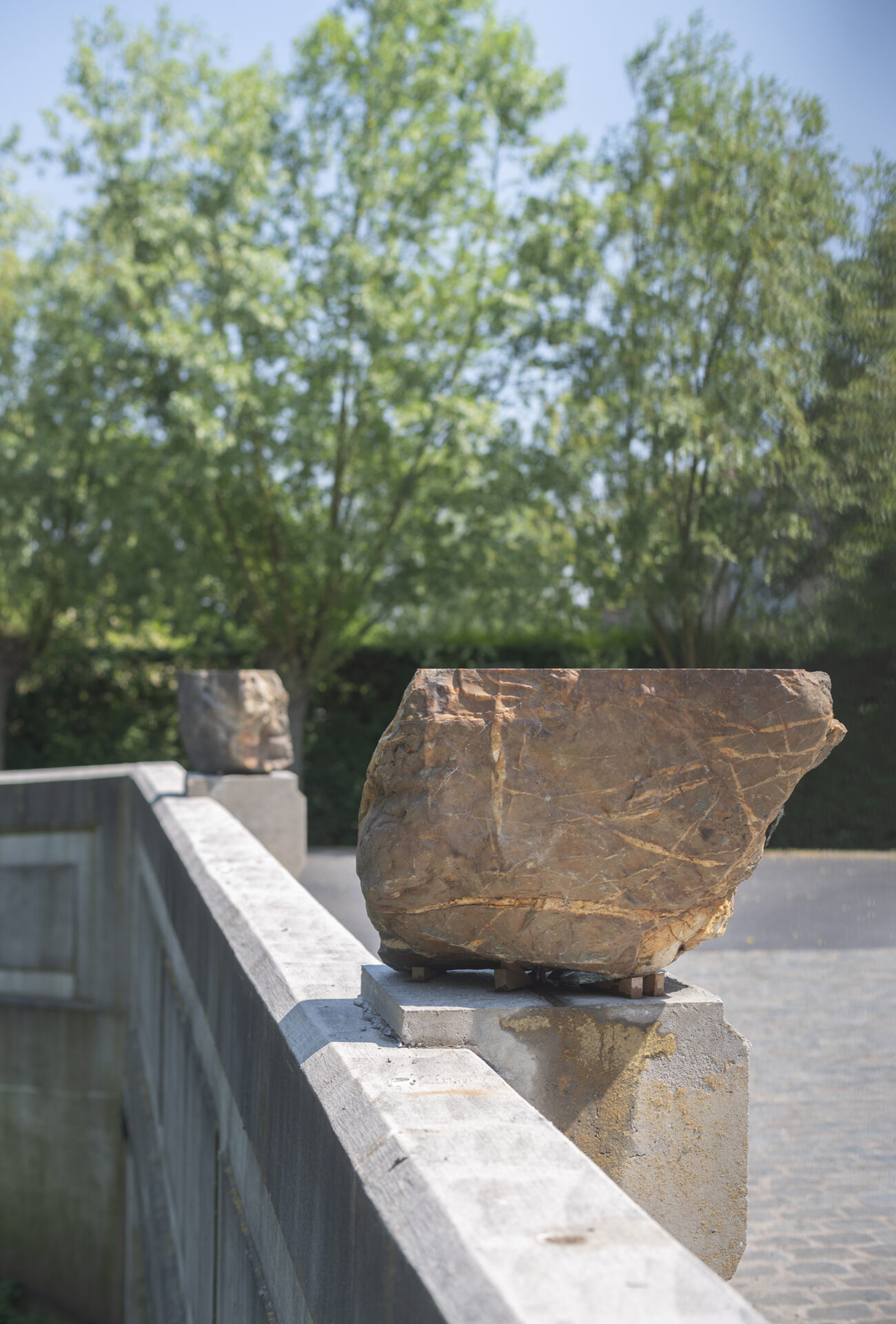

















The marble “souvenirs” were created when Cole decided to move back to the city after 10 years of living in the countryside near Chimay. To remember the region, he started the souvenir works, one series consisted of photographic images, another of fragments of marble that Cole found in the woods around Chimay where Belgium’s red marble used to be extracted. Cole added a small gesture: he sawed off part of the stone and polished the surface. The works are hung on the wall with the cut at eye level. The pieces become sculptures through this action and they become landscapes because the line coincides with the horizon. In new versions Cole took Mexican Marbles and Meuse Boulders, those boulders are stones that where pushed into the Meuse valley by glaziers during the ice ages, they have no relation to the common geology.
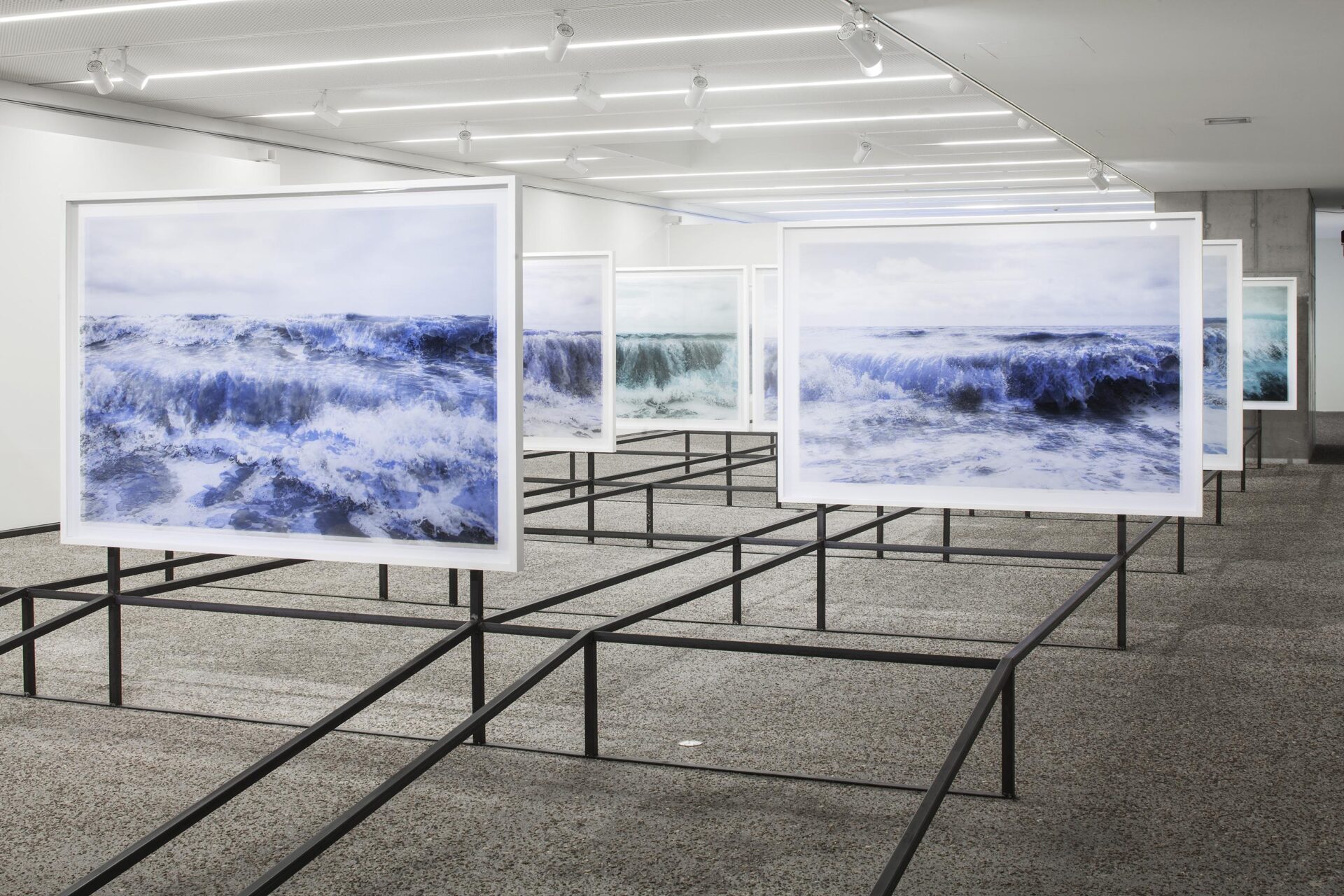

















The “Blue prints” are photographic works. 2 snapshots, with a fraction of a second in between, of the same wave are mounted in front of each other. The first image is printed in a monochrome blue/green tint, the moment that follows in black and white on Plexiglas. The works acquire a three-dimensional character due to the superposition; they seem to move when a viewer takes a different position, the light casts an ever-changing shadow on top of the back image. The blue prints were set up in C-Mine for the “Marine 1:1” exhibition so that the spectators could wade through them. In Haus der Kunst Solothurn, they were presented in the choir of a chapel.








In these works, an image is divided into image and colour. The image is drawn, the colours placed on top within a grid of 16×16 squares, listing them from light to dark. A rudimentary two-part collage emerges.




















These flags show part of the crown of a tree. Waving in the wind, they evoke the movement of the leaves. Just like normal flags, they represent a location; for Cole himself they are very concrete places, but for a viewer the images become more universal or refer to places from their frame of reference.




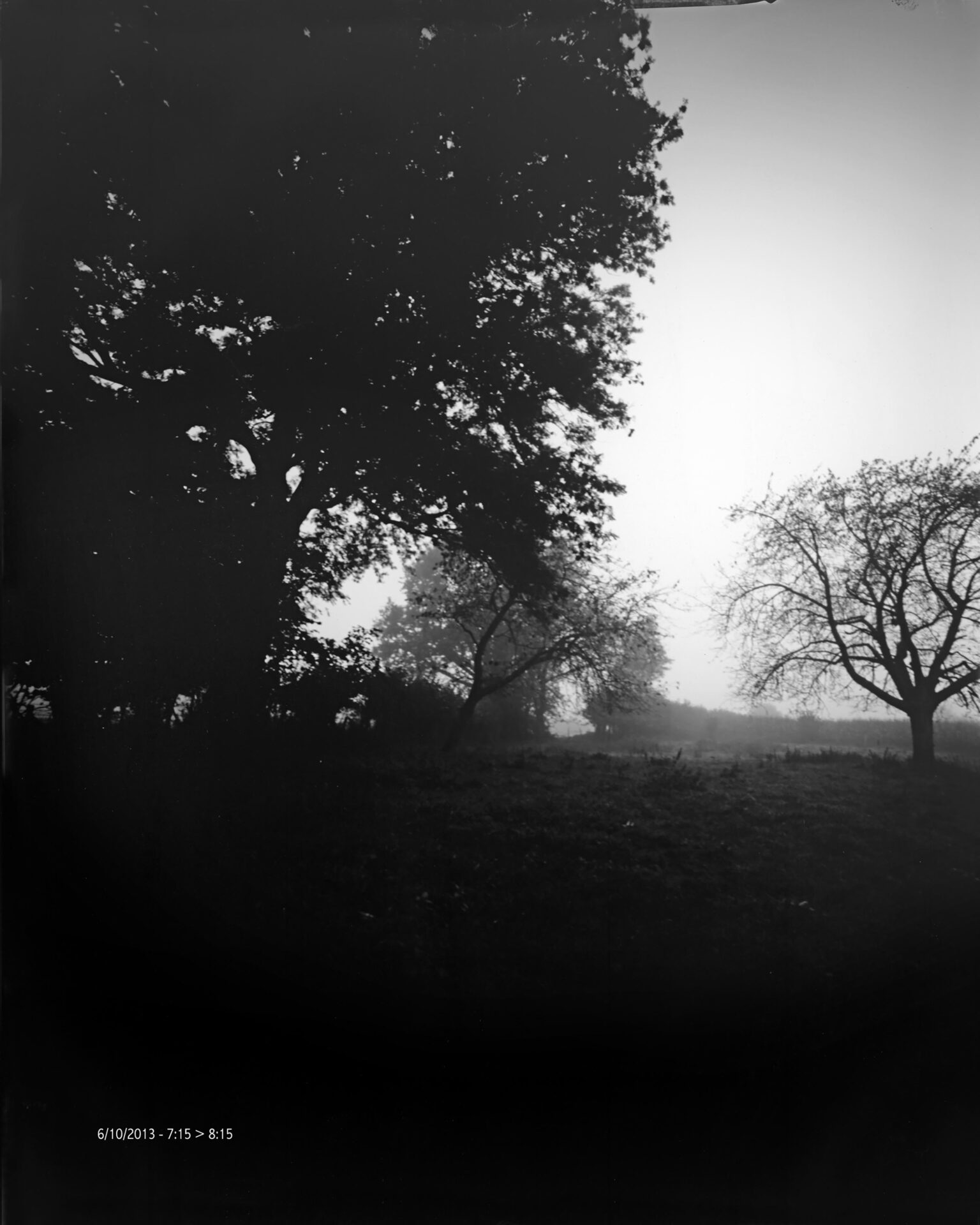







Stijn Cole’s black-and-white photos are Camera obscura images (L’heure bleue) in which the camera captures the light for an hour during the morning twilight. Cole made these works for the Images & Colors exhibition. White rainbow is a photograph of a rainbow converted to black and white. It forms a white arch in the image.










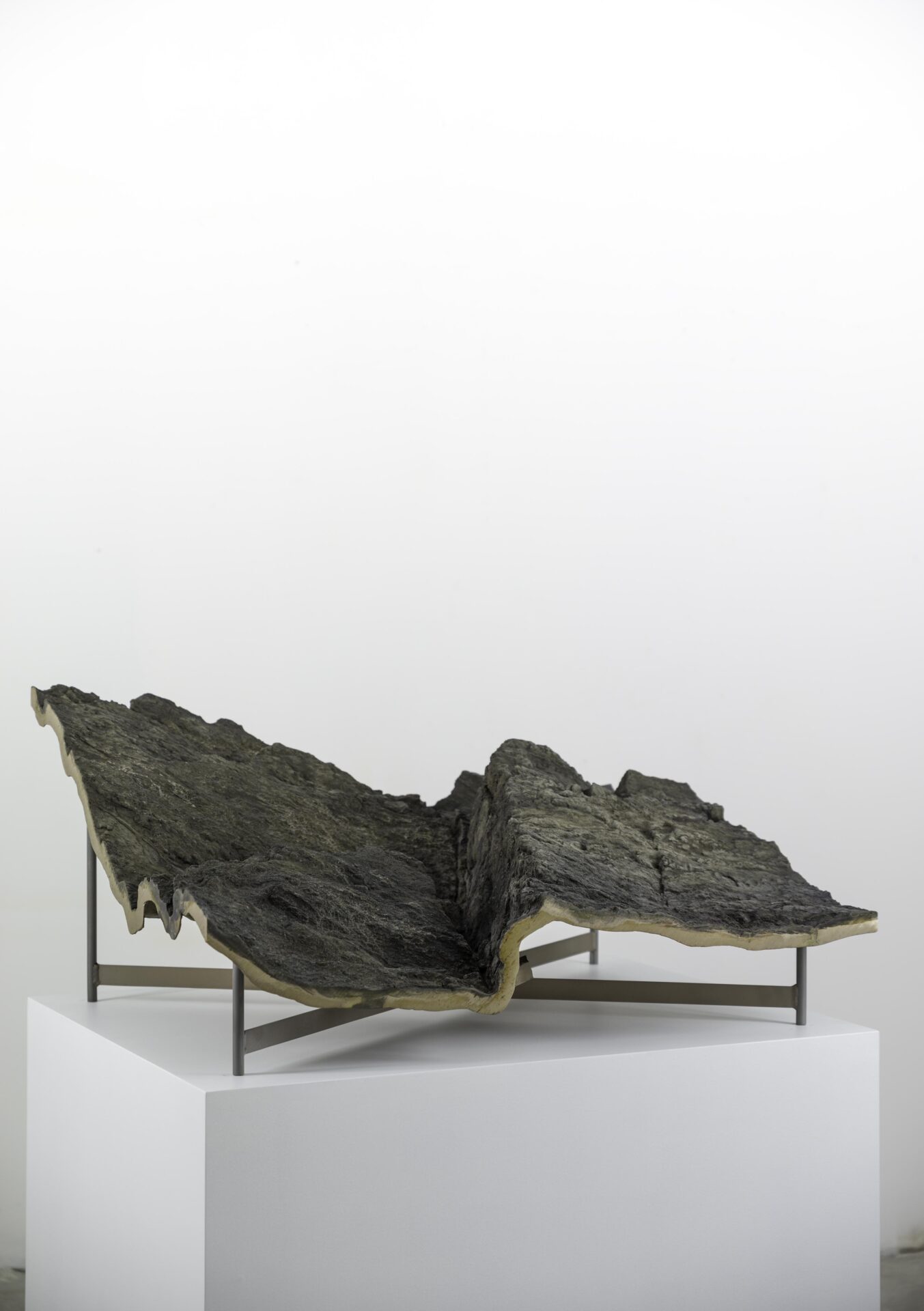









The 1:1 sculptures are exact replicas of parts of the landscape. Cole moulds a part with a rectangular surface in places that are meaningful to him but, as with the other works, take on a universal character once they are shown to the public. The first ” recordings ” of the landscape were 2 parts of the Mont saint Victoire in Aix en Provence. He exhibited them in the Chateau de Chimay. These works were still executed in wax, since then he has only made this type of work in bronze. Other places that were reproduced were parts of the French coast in Cancale and a piece of a dry waterfall in Sautadet.
















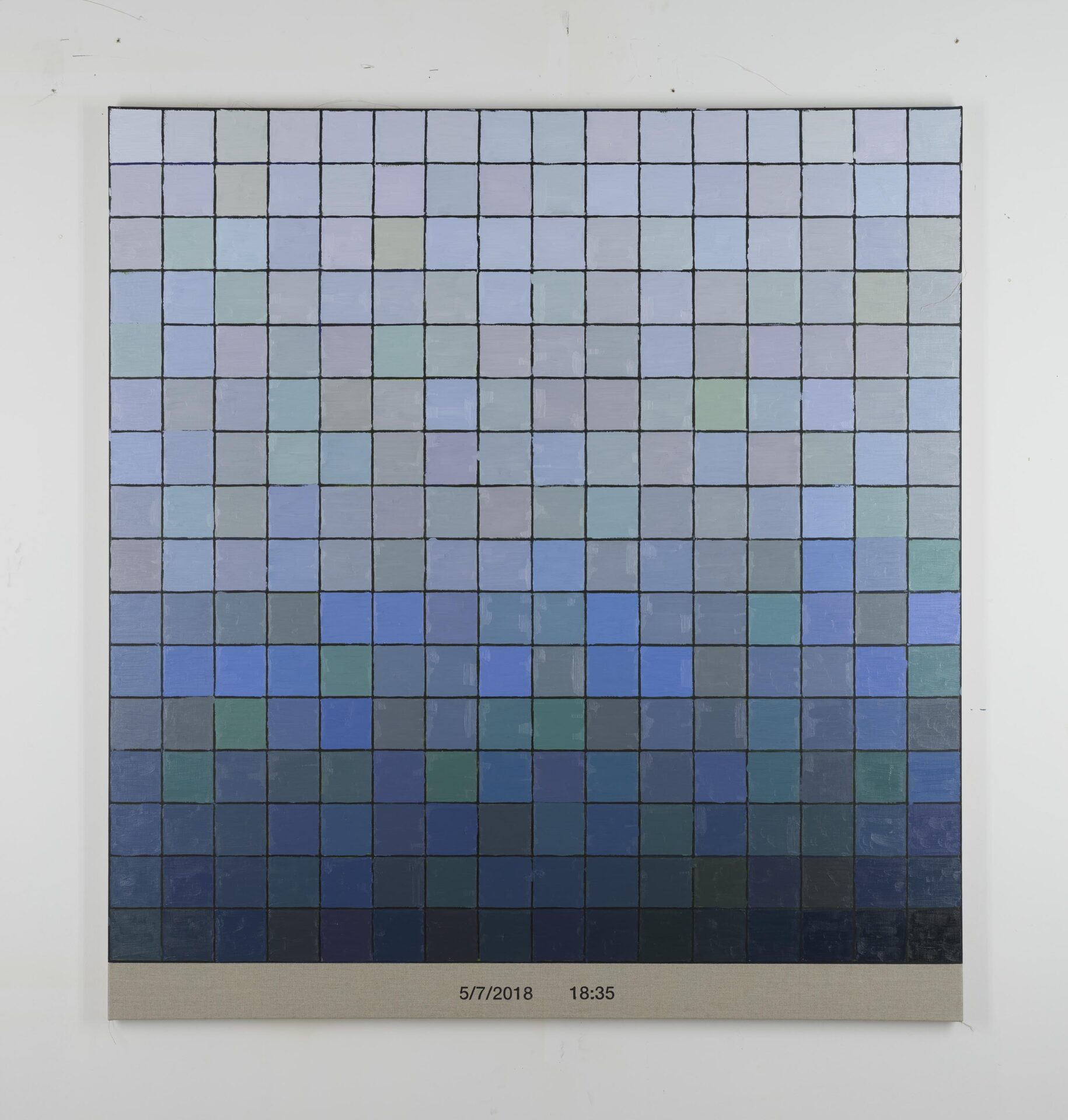









In the “Colorscape” paintings, the same process is always applied: the colours from a photograph are ordered from light to dark within a grid of 16×16 squares. Because the light colours end up at the top of this mathematical, computer-controlled list, many of these works create the illusion of a horizon and an abstracted landscape. The colours are reproduced in oil paint. Every time Cole reverts to this process, however, a different concept is worked out. For the El Camino exhibition, he went to Finistère (France) to photograph a sunset in three directions, and then to Fisterra (Spain) to do the same. This resulted in two triptychs / altarpieces that depict the unknown from the mainland. In another series, by analogy with the Calais series by Marthe Wéry, he painted 17 paintings based on 17 snapshots of the sea taken from the pier in Calais. The dimensions were derived from those used by Wéry; both series were shown interchangeably in BPS22. Two paintings were hung on the scene of the baroque theatre of the Chimay castle, one in the first scene and another, slightly smaller, in the second. The closest depicted the front part of a landscape, the other the back part…












By simply adding a fold where the hidden horizon in a misty landscape was, a new horizon appears. The work reacts to the rhythm of the light; the horizon formed by the shadow is sometimes more, sometimes less, or not visible at all.














2 steps aside:
For this work, Cole made a journey from Texel (the Netherlands) to Bialowieza (Poland), a journey from a cultural landscape, the Dutch polders recently reclaimed from the sea, to the only remaining piece of primeval forest in Europe. In the middle of that journey (geographically and mentally), Cole visited a landscape park in Branitz (Germany). In this park, designed by Fürst Pückler Muscau, nature was composed for the first time in function of a visitor on foot. Previously, avenues were created in landscape parks so that people could move from one spectacular view to another by carriage. In Branitz, new views are constantly emerging. Cole made three pairs of photos in which I took two steps sideways in between the images. He converted these images into three times two drawings that were presented with the same spacing as in which the photos were taken (2 steps).
These photos where taken at Be-Part, the expo room there is round so he brought the left and right sides forward a bit to position both works in a straight line next to each other.
Façades was an expo with Hans Demeulenaere, Wesley Meuris, Honoré d’O & Stijn Cole